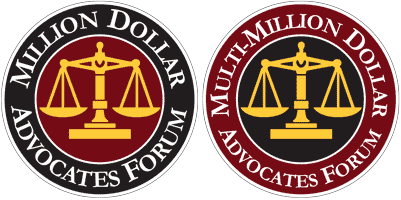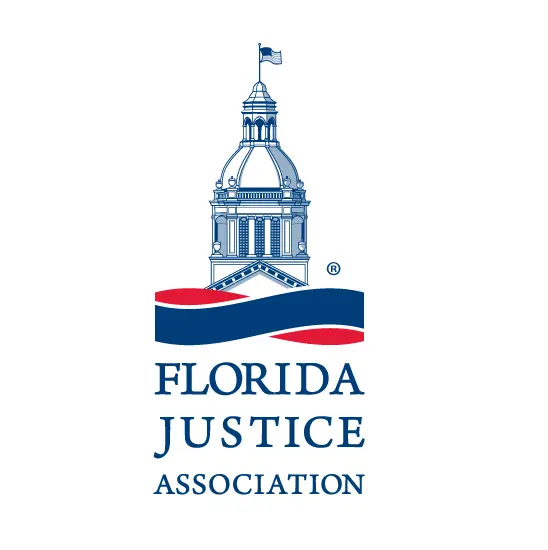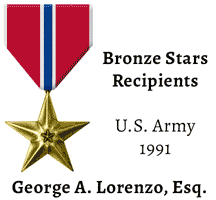
Learn about liability in phantom vehicle crashes and the evidence required to recover compensation in Tampa
No-contact accidents, where a driver loses control and crashes without physical contact with another vehicle, are a significant concern on Florida’s roads, particularly in busy and often congested areas like Tampa.
In many no-contact accidents, the driver who crashes is not at fault, as these accidents commonly result from another driver’s mistake, such as an abrupt lane change, a sudden stop, or distracted driving, that forces the affected driver to swerve or brake to avoid a collision.
Despite the lack of contact, determining liability and recovering compensation in these cases can be challenging. In this article, we’ll explore the legal complexities of these accidents, focusing on how accident victims can prove liability and seek compensation in the state of Florida.
What is a no-contact accident?
A no-contact accident, also known as a phantom vehicle accident, occurs when a driver crashes or loses control of their vehicle due to the actions of another driver without any physical collision between the vehicles.
The term “phantom vehicle accident” is used because the responsible vehicle is often unidentified or disappears from the scene, making it challenging to establish liability and seek compensation.
What is an example of a phantom vehicle accident?
Below are some common scenarios in which another vehicle manages to cause an accident without making contact with the car that crashes:
- Brake-checking. A driver in front suddenly slams on the brakes, forcing the following driver to react quickly to avoid a rear-end collision, potentially leading to loss of control or a crash with another vehicle.
- Sudden lane change. While driving on a multi-lane road, a driver abruptly merges into a lane or cuts off another vehicle, forcing the affected driver to swerve or brake suddenly to avoid a collision. This can lead to the affected driver losing control or crashing into another vehicle or obstacle, like a side rail.
- Running a red light. A driver runs a red light at an intersection, causing another driver to brake or swerve to avoid being hit. The sudden change in speed or direction can result in an accident.
- Parking lot incidents. A vehicle backs out of a parking space without checking for oncoming traffic, causing another driver to swerve or stop suddenly to avoid a collision.
- Failing to yield. A vehicle fails to yield the right of way, causing another driver to swerve to avoid a collision. This can happen at intersections, roundabouts, or when merging onto highways.
- Debris on the road. A vehicle loses cargo or debris, which another driver tries to avoid by swerving or making a sudden stop, resulting in a crash.
In each of these scenarios, the phantom vehicle’s actions create a dangerous situation that forces another driver to react, often leading to an accident.
The Ripple Effect of Car Accidents:
Costs You May Not Expect
Understand the true costs of a car accident so you can get the most out of your personal injury claim.
Is a phantom vehicle accident the same as a hit-and-run?
A phantom vehicle accident is similar to a hit-and-run but not exactly the same. In a hit-and-run, there’s physical contact between the vehicles, and the at-fault driver leaves the scene without providing their information.
In contrast, a phantom vehicle accident, often referred to as a “miss-and-run,” involves a vehicle causing another driver to crash or take evasive action without making physical contact and then leaving the scene.
In both cases, the at-fault driver cannot be immediately identified, but the key difference is the absence of direct contact in phantom vehicle accidents.
Tampa truck driver narrowly survives accident caused by phantom driver
In April 2023, a phantom vehicle was blamed for a truck accident on Interstate 275 in Tampa, where a semi-truck was damaged after being cut off by a vehicle that fled the scene. According to the 33-year-old truck driver from Lake Wales and the Florida Highway Patrol, the phantom vehicle was parked on the outside shoulder and abruptly re-entered the traffic lane, cutting off the semi-truck.
According to Click Orlando, the truck driver slammed on the brakes to avoid a collision, causing two of the six 5,400-pound Duke Energy poles he was hauling to break loose and impale the cab of the truck, nearly missing him in the process. The semi-truck came to rest in the outside southbound lane, with approximately 85 feet of skid marks observed at the scene. The truck driver was fortunate to leave the scene alive.
Can a phantom driver be liable in a no-contact accident?
Yes, they can be. Just like any other accident, liability in a no-contact crash boils down to negligence. Determining fault revolves around identifying which party acted negligently and whether their actions directly caused the accident.
Establishing negligence involves examining various factors, including witness statements, surveillance footage, and physical evidence from the scene, such as skid marks or debris patterns. Police reports and expert reconstructions can also be crucial in piecing together the events leading up to the crash.
When it comes to phantom vehicles, proving fault and recovering damages is often more difficult, as the identity of the driver may not be known. In such cases, it’s vital for the affected driver to gather as much evidence as possible to support their claim.
Witness accounts and surveillance footage can be particularly helpful in identifying the at-fault driver and ultimately securing compensation.
What Damages Can I Claim After a Florida Car Accident?
Learn about the different types of compensation you may qualify for after an accident in Tampa.
Who pays for damages in Florida if the person who flees the accident can’t be found?
In Florida, if the driver responsible for a no-contact accident flees the scene and cannot be identified, the injured party may have to rely on their own insurance coverage to pay for damages.
Florida is a no-fault insurance state, meaning that regardless of who caused an accident, each driver’s insurance covers their own injuries and damages up to a specified amount. Although drivers can file a lawsuit for cases involving catastrophic injuries that result in significant disfigurement, physical limitations, or disabilities.
Because Florida drivers are typically responsible for their own damages in an accident (at least minor ones), personal injury protection (PIP) insurance is mandatory for all Florida drivers. It provides immediate financial support after an accident, covering a portion of medical expenses and lost wages.
What does PIP insurance cover?
A driver’s own PIP insurance should cover the following after an accident:
- Medical expenses. PIP covers 80% of necessary and reasonable medical expenses related to the accident, such as hospital bills, doctor visits, and rehabilitation services, up to the policy limits. The standard minimum coverage is $10,000.
- Lost wages. PIP covers 60% of lost wages if the insured is unable to work due to injuries sustained in the accident. The standard minimum coverage is also $10,000.
- Death benefits. In the event of a fatal accident, PIP provides a $5,000 death benefit to the deceased’s estate.
However, PIP insurance does not cover:
- Property damage. PIP does not cover damage to the insured person’s own vehicle. It only covers damage they cause to another driver’s vehicle. For property damage, drivers will need to rely on their collision coverage or uninsured motorist property damage coverage.
- Pain and suffering. PIP does not compensate for non-economic damages, such as pain and suffering, emotional distress, or loss of enjoyment of life.
- Full lost wages. Since PIP only covers 60% of lost wages, it does not compensate for the total income loss experienced by the injured party.
In the absence of the at-fault driver, having comprehensive insurance coverage can significantly ease the financial burden after a no-contact accident, making it crucial for Florida drivers to review their insurance policies and consider additional coverages to ensure adequate protection.
Injured in a no-contact accident in Florida? Lorenzo & Lorenzo can help!
If you’ve been seriously injured in a no-contact accident in Florida, navigating the complexities of insurance claims and determining liability can be overwhelming. At Lorenzo & Lorenzo, our experienced Tampa car accident attorneys are well-versed in handling car crash claims, including challenging no-contact cases.
With a deep understanding of Florida’s legal landscape and a commitment to securing the best possible outcome for our clients, we can guide you through every step of the process. From gathering crucial evidence to negotiating with insurance companies, we’re here to help you pursue the compensation you deserve.
Don’t face the aftermath of a no-contact accident alone. Contact Lorenzo & Lorenzo today for a free consultation so we can advocate for your rights and help you get the financial compensation you need to move forward.








